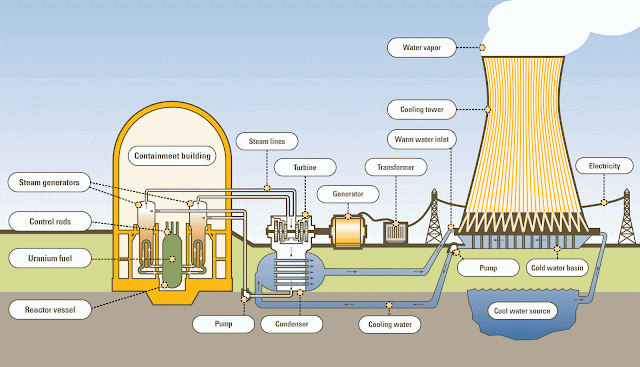Δημήτρης Νανόπουλος: 10 χρόνια σωματίδιο Higgs
Ο Ακαδημαϊκός Δημήτρης Νανόπουλος εξηγεί στην εκπομπή «Πρίσμα» της TV-100 το παρασκήνιο του πειράματος για την ανακάλυψη του σωματιδίου Higgs και μιλά για κρίσιμες στιγμές της κβαντικής φυσικής. Αναφέρεται, ακόμη, στους ορίζοντες που ανοίγουν οι νέες ανακαλύψεις.

H περίληψη της εργασίας των John Ellis, Mary K. Gaillard, και Δημήτρη Νανόπουλου, με τίτλο: «A phenomenological profile of the Higgs boson».
Πρόκειται για την πρώτη δημοσίευση που συζητά τα χαρακτηριστικά του μποζονίου Higgs και τις πιθανές πειραματικές του «υπογραφές». Στη δημοσίευση αυτή παρουσίαζεται ο πρώτος υπολογισμός της διάσπασης του μποζονίου Higgs σε ένα ζεύγος φωτονίων, που είναι ένα από τα κανάλια που χρησιμοποιήθηκε στα πειράματα ATLAS και CMS για την ανίχνευση του μποζονίου Higgs το 2012
Όπως είναι γνωστό, το Βραβείο Νόμπελ Φυσικής 2013 απονεμήθηκε από κοινού στους François Englert και Peter W. Higgs για την ανακάλυψη του σωματιδίου Higgs. Σημαντική υπήρξε η ελληνική συνεισφορά στην επιστημονική αυτή εργασία, όπως αποτυπώνεται στο κείμενο των John Ellis, Δημήτρη Νανόπουλου και Εμμανουήλ Τσεσμελή, που ακολουθεί:
Greek Contributions to the Discovery of the Higgs Boson
The Nobel Prize in Physics 2013 was awarded jointly to François Englert and Peter W. Higgs “for the theoretical discovery of a mechanism that contributes to our understanding of the origin of mass of subatomic particles, and which recently was confirmed through the discovery of the predicted fundamental particle, by the ATLAS and CMS experiments at CERN’s Large Hadron Collider (LHC).”
In 1964, Francois Englert, Robert Brout [1] and independently Peter Higgs [2] proposed how force-carrying gauge particles could become massive, and Higgs pointed out that a key prediction was the existence of a massive particle of a novel type, which has come to be known as the Higgs boson. In 1967 and 1968 Steven Weinberg [3] and Abdus Salam [4] used these ideas to construct the Standard Model of particle physics, but for several years neither theorists nor experimentalists thought much about looking for the Higgs boson.
The first paper to discuss the characteristics of the Higgs boson and its possible experimental signatures was written at CERN by John Ellis, Mary Gaillard and Dimitri Nanopoulos in 1975 [5]. In this paper they made a first calculation of the decay of the Higgs boson into a pair of photons, which is one of the channels used by the ATLAS and CMS experiments to discover the Higgs boson in 2012. In 1978, Howard Georgi, Sheldon Glashow, Marie Machacek and Nanopoulos calculated the production of the Higgs by gluon collisions [6], which is the dominant mechanism at the LHC, and Glashow, Nanopoulos and Asim Yildiz calculated Higgs production in association with a massive gauge boson [7], another of the processes being studied at the LHC.
The Higgs particle was discovered by the ATLAS and CMS collaborations [8], each of which involves over 3000 people from all around the world. They have constructed sophisticated instruments – particle detectors – to study proton collisions at CERN’s LHC, itself a highly complex instrument involving many people and institutes in its construction.
Greek researchers have made notable contributions to the experimental search for the Higgs boson. The exploitation of the LHC is currently the main objective of Greek researchers at CERN, who have made a strong commitment to the LHC and in particular to its two main general-purpose experiments – ATLAS (through the National Technical University of Athens, the University of Athens, the University of the Aegean, and the Aristotle University of Thessaloniki) and CMS (through the University of Athens, the National Center for Scientific Research Demokritos, and the University of Ioannina). The Greek institutes have participated in the design, construction and commissioning of the barrel muon systems of ATLAS, and of the preshower detector and data acquisition system of CMS. These detector systems have been used for the discovery of the Higgs boson and the Greek teams have also had a strong involvement in the corresponding data analysis. These experiments have been the primary research effort in particle physics in Greece and have been funded through the General Secretariat for Research and Technology (GSRT).
The Greek effort has also contributed to the large-scale, data-intensive computing for the LHC through the World-wide LHC Computing Grid (WLCG), an international collaboration to distribute and analyse LHC data. Distributed Tier-2 computing Grid centres have been realised in Greece.
A novel activity for the Greek scientific community is the successful participation of a team of 12 engineers in the LHC accelerator cryogenics integration during the years 2006-2008 and currently of a team of 11 engineers in the magnet group for the LHC accelerator consolidation during the LHC long shutdown period.
The discovery of the Higgs boson is the start of a major programme of work to measure the particle’s properties with the highest possible precision for testing the validity of the Standard Model and to search for further new physics at the energy frontier. In view of this, Greek scientists are also participating in the R&D for the high-luminosity upgrade for the ATLAS and CMS experiments, with the development of MICROMEGAS muon detectors as well as the trigger and data acquisition systems.
References
[1] Phys. Rev. Lett. 13 (1964) 321.
[2] Phys. Lett. 12 (1964) 132, Phys. Rev. Lett. 13 (1964) 508.
[3] Phys. Rev. Lett. 19 (1967) 1264.
[4] Proceedings of the 8th Nobel Symposium, on Elementary Particle Theory, Almqvist and Wiksell, 1968.
[5] Nucl. Phys. B106 (1976) 292.
[6] Phys. Rev. Lett. 40 (1978) 692.
[7] Phys. Rev. D18 (1978) 1724.
[8] Phys. Lett. Volume 7 16, Issue 1, 17 September 2012 (ATLAS – CMS)
John Ellis
Dimitri Nanopoulos
Emmanuel Tsesmelis
October 2013










Σχόλια
Δημοσίευση σχολίου